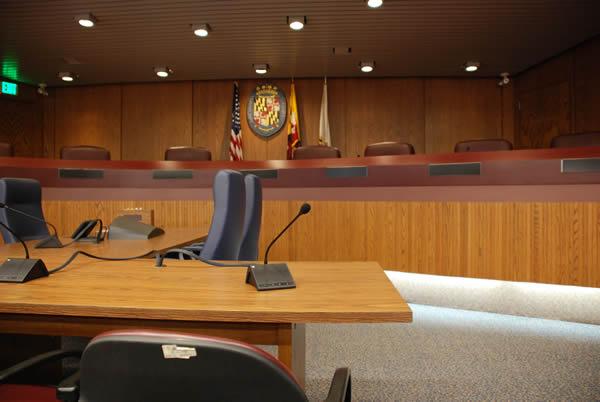Last week I wrote about the big legislative body in town this time of year, and in closing I promised to cover news from the smaller legislative body, the one that meets every other Monday night on the first floor of the Arundel Center and acts as a check and a balance on what I and my staff do upstairs.
But I better be damn careful what I say. Every County Executive before me and I myself have stories of mistakes we regret and successes we credit to our relationships with members of the County Council. So here we go…
First, I will state the obvious. There are seven districts and each of the seven members is elected by residents from one of them. Unlike the Board of Education, each person on the Council runs as a representative of one of two political parties. Doing otherwise is very difficult. I once considered it.
While there are four Democrats and three Republicans, I have been on opposite sides of issues with each member at least once, and each of them has broken with others in their party on votes. We have two men and five women serving who study the merits of every bill before them and consider lots of impacts before taking a position. Votes that break down by party can usually be explained by a principle that a party generally shares, rather than a party boss demanding loyalty. I’ve been encouraged to play that boss role more than once, but I don’t. I argue for and against bills on what I consider their merits, just as they do.
Recently, the Council hit a bump in the road. Four of the seven, one Democrat and three Republicans, passed a resolution with little explanation removing the chair’s supervisory authority over the Council staff and transferring it to all seven members. I and others, particularly the three Democrats who opposed the resolution, expressed concern that from a management perspective the resolution would create chaos, and the timing couldn’t have been worse. Two of the council’s top three staff positions were vacant and the third, the administrator who manages the flow of the work, announced an April 10 departure in response to the resolution’s circulation.
Residents expressed alarm. Some speculated that the proposal stemmed from a conflict between two of the council Democrats, and that the three Republicans got involved as a way to divide Democrats and thereby create a new Council majority block.
I won’t comment on those theories. I will only say how much gratitude and relief I feel that all seven members came together at the subsequent meeting to restore the past practice of Chair supervision, and also to hire a new staff attorney. If only the United States Congress would do hard things like that in service to the public.
More challenges are coming for this Council. We have new schools opening that need to be staffed, cuts in state support for education and transportation, and a public safety recruitment drought that must be addressed in the FY25 budget. We have an affordable housing crisis to confront with modernization of our land use laws. And we have what is historically the most contentious, complicated, and impactful work that comes before County Councils on its way: land use plans and comprehensive rezoning.
Stakeholder Advisory Committees in three of the county’s nine regions have completed their work, sent their plans to the Council, and proposed parcels of land that they believe should be rezoned. I proposed this nine-region stakeholder process and had it precede the Council’s rezoning deliberations to empower communities. Our Office of Planning and Zoning went to great lengths to ensure that the stakeholders were not only the long-time homeowners that historically dominate these activities, but also renters, working people, and business owners.
The Council deliberations are an opportunity for interests unhappy with the stakeholder committee recommendations to seek a Council majority to act on their behalf. They usually go to the councilmember who represents the land in question first, and if they get support there, they appeal to others with the concept of local courtesy. That means that councilmembers outside the district support the position of their colleague whose district the land is in.
I suspect that this Council, which has become pretty sophisticated about the impacts of zoning, may consider factors beyond just local courtesy. All I know for sure is that everyone involved should saddle up and check their girths, because this bronc can buck.
As we move from the last rodeo into this next one - let me know if you like these farm boy references cuz I can use them till the cows come home - there’s something serious and pretty extraordinary that I must say about every single one of the seven members on the Anne Arundel County Council. Not a single one has ever lied or even misled me about their intentions. They are seven of the most honest and sincere people I know, even when I’m in full battle against their position on an issue that I care deeply about.
So just as I said last week with respect to members of the Maryland General Assembly, lobby them, but lobby them with empathy. For the County Council, I’ll take that one step further. Attack their positions, but not their character, because on character you won’t win.
Until next week…
Steuart Pittman
Anne Arundel County Executive

